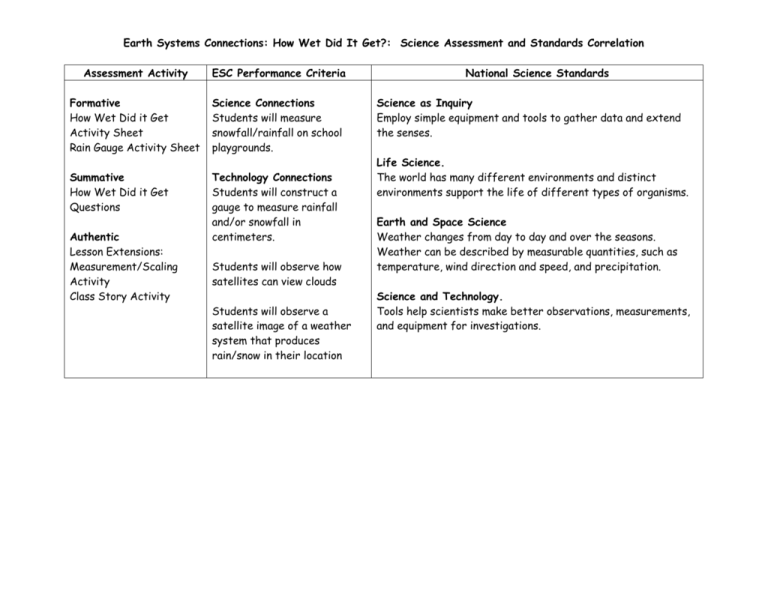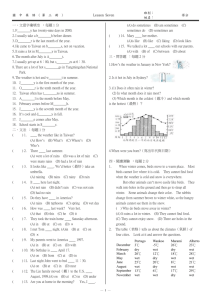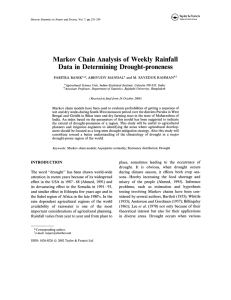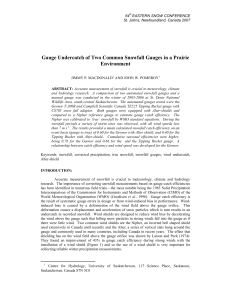Assessment and Standards Correlation
advertisement

Earth Systems Connections: How Wet Did It Get?: Science Assessment and Standards Correlation Assessment Activity ESC Performance Criteria Formative How Wet Did it Get Activity Sheet Rain Gauge Activity Sheet Science Connections Students will measure snowfall/rainfall on school playgrounds. Summative How Wet Did it Get Questions Technology Connections Students will construct a gauge to measure rainfall and/or snowfall in centimeters. Authentic Lesson Extensions: Measurement/Scaling Activity Class Story Activity Students will observe how satellites can view clouds Students will observe a satellite image of a weather system that produces rain/snow in their location National Science Standards Science as Inquiry Employ simple equipment and tools to gather data and extend the senses. Life Science. The world has many different environments and distinct environments support the life of different types of organisms. Earth and Space Science Weather changes from day to day and over the seasons. Weather can be described by measurable quantities, such as temperature, wind direction and speed, and precipitation. Science and Technology. Tools help scientists make better observations, measurements, and equipment for investigations. Earth Systems Connections: How Wet Did It Get?: Mathematics Assessment and Standards Correlation Assessment Activity ESC Performance Criteria Formative How Wet Did it Get Activity Sheet Rain Gauge Activity Sheet Math Connections Students will measure rainfall/snowfall in centimeters using a rain gauge. Summative How Wet Did it Get Questions Students will make a bar graph of the total amount of rainfall/snowfall. Authentic Lesson Extensions: Measurement/Scaling Activity National Mathematics Standards Numbers and Operations Understand numbers, ways of representing numbers, relationships among numbers, and number systems Measurement. Understand measurable attributes of objects and the units, systems, and processes of measurement; apply appropriate techniques, tools, and formulas to determine measurements. Data Analysis and Probability Pose questions and gather date about themselves and their surroundings; sort and classify objects according to their attributes and organize data about the objects; represent data using concrete objects, pictures, and graphs. Communication Organize and consolidate their mathematical thinking through communication; Communicate their mathematical thinking coherently and clearly to peers, teachers, and others; use the language of mathematics to express mathematical ideas precisely. Connections. Recognize and apply mathematics in contexts outside of mathematics. Representation. Create and use representations to organize, record, and communicate mathematical ideas, and use representations to model and interpret physical, social, and mathematical phenomena.











